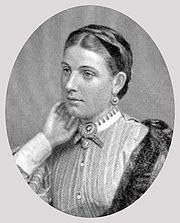By Bernard Verdcourt


S. W. Baker was born in London on 8th. June 1821, the son of a wealthy ship-owner who directed a bank and a railway. Naturally he was well educated including a finishing in Germany. He married a clergyman’s daughter and went to Ceylon to found an agricultural settlement; later, in March 1859, he was a construction manager on the Danube Railway and throughout his life an inveterate big game hunter, but later in his life it is said he regretted having killed so many elephants.
His first wife died in 1855 and Baker is usually assumed to have been married to the young lovely blonde Hungarian girl 15 years his junior who accompanied him to Africa but in fact they were not married until 4 Nov. 1865. Baker had actually saved this girl Florence from what would have been a very different life by buying her at a slave auction in Bulgaria in January 1859 for a sum never revealed *; Florence was soon to experience hardships and see scenes of cruelty totally foreign to the Victorian ladies of the time. The fact that Baker had a mistress rather than a wife was of course a social crime of great magnitude. The information soon got about. Long after they were married, Queen Victoria, who was soon informed by well-wishers, was quite annoyed that ‘Bertie’ (later Edward 7th.) had socialized with the Bakers and indeed had subjected ‘Alix’ (later Queen Alexandria) to unsuitable people. She never ever received Lady Baker despite the fact she was a darling of the British public. Livingstone spoke of "Baker’s woman" and General Gordon, who was Baker’s successor as Governor in the Sudan, was often very critical.
Although in some ways the typical Victorian hunting shooting clubman type, he was also a good linguist and author. He. thoroughly enjoyed daring hazardous journeys and his acquaintance with Speke probably stimulated his interest in Africa. It was in April 1861 he took Florence to Africa and in February 1863 had the honour to be the first white man to welcome Speke and Grant at Gondokoro after their walk from Zanzibar; and she was the first white woman to get to a source of the Nile. He placed his three vessels at their disposal and supplied them with stores. Later he explored a lake he called Albert Nyanza and collected some bivalves in it; these were described by H. Adams in 1866.
On returning from his Lake Albert expedition he spent a few quiet years at Hedenham Hall in Norfolk writing up his Nile work and also an adventure tale obviously in a large part autobiographical. Later he was approached by the Khedive Ismail and went into service with the Egyptian government. On the 1st. April 1869 he was appointed Governor General of the Equatorial Nile basin for four years with the rank of pasha and major-general in the Ottoman army. He was supposed to ensure the subjection to Egyptian authority of the countries to the south of Gondokoro, the suppression of the slave trade, the introduction of regular commerce and the opening to navigation of the great lakes about the equator. He was the first Englishman to hold high office in the Egyptian government and was in no way supported by the English Foreign Office. He returned to England in 1873 and was much feted by the Geographical Society and others. He visited Egypt and India many times and hunted elephant in Africa and Ceylon, tigers in India, deer in Japan and bears in the Rocky Mountains. He enjoyed vigorous health and showed remarkable tenacity and resource as an explorer. He died on 30th. December 1893 at Sandford Orleigh near Newton Abbot where he had bought a small estate in 1874; Florence did not die until 1916.
List of molluscs described from material collected by S. W. Baker
| Unio acuminatus | Adams, 1866. | Lake Albert. | = Caelatura acuminata (Adams, 1866). Type not found in B.M. |
| Unio bakeri | Adams, 1866. | Lake Albert. | = Caelatura bakeri (Adams, 1866). Type not found in B.M. |
References
| Adams, H. (1866). | List of the shells collected by Samuel White Baker Esq., during his recent Explorations in Central Africa. Proc. zoo. Soc. 1866: 275–6. |
| Smith, E.A. (1888). | On the shells of the Albert Nyanza, Central Africa, obtained by Dr. Emin Pasha. Proc. zoo. Soc. 1888: 52–56. |
B. Verdcourt
